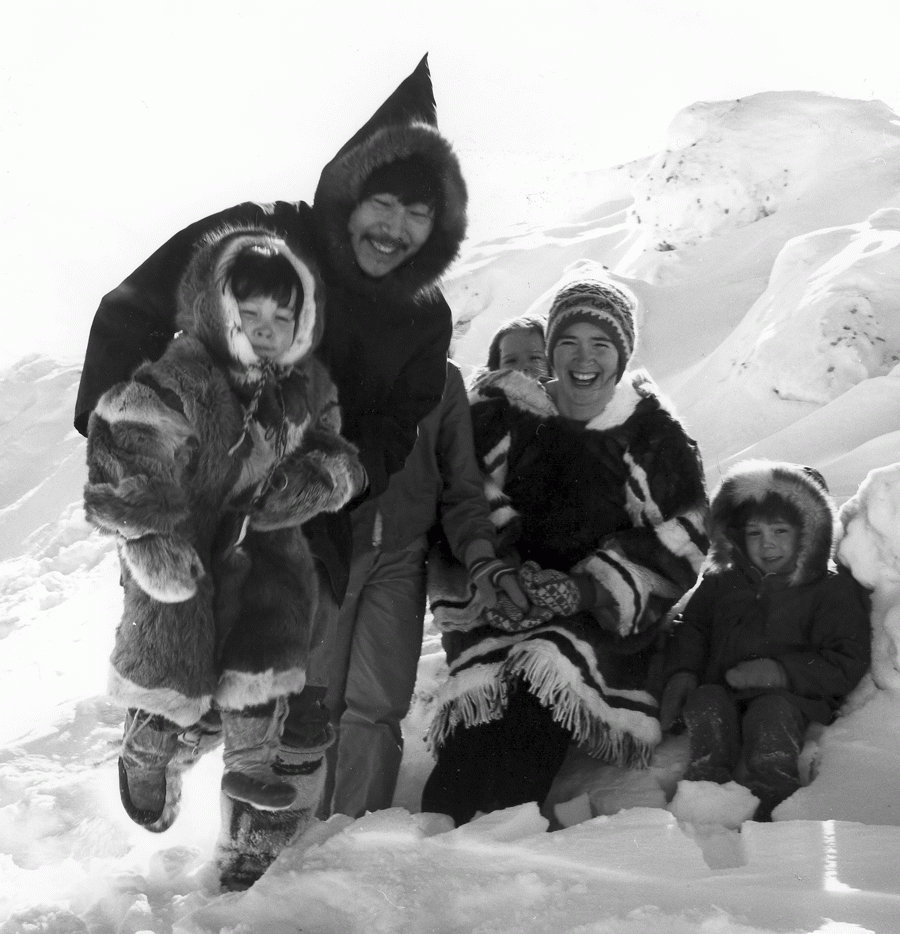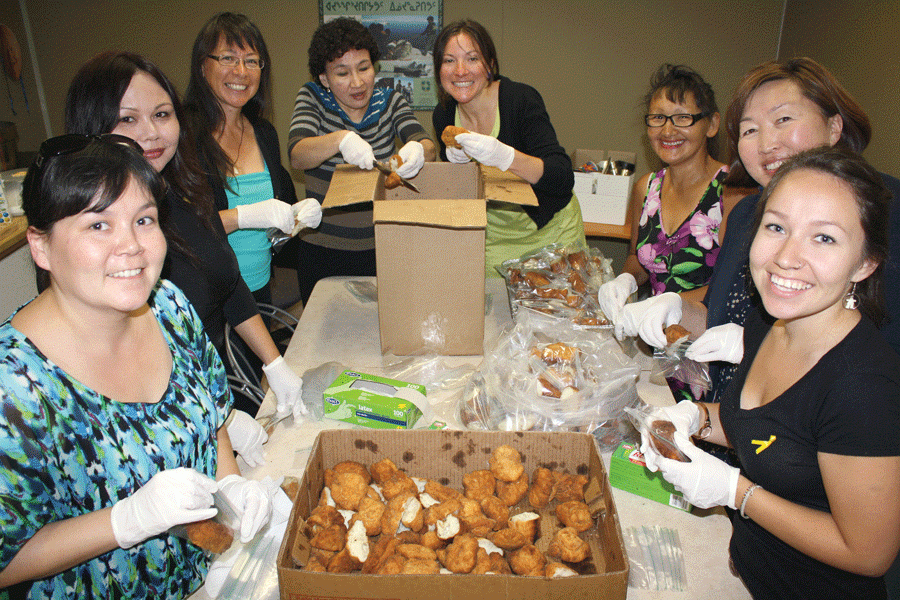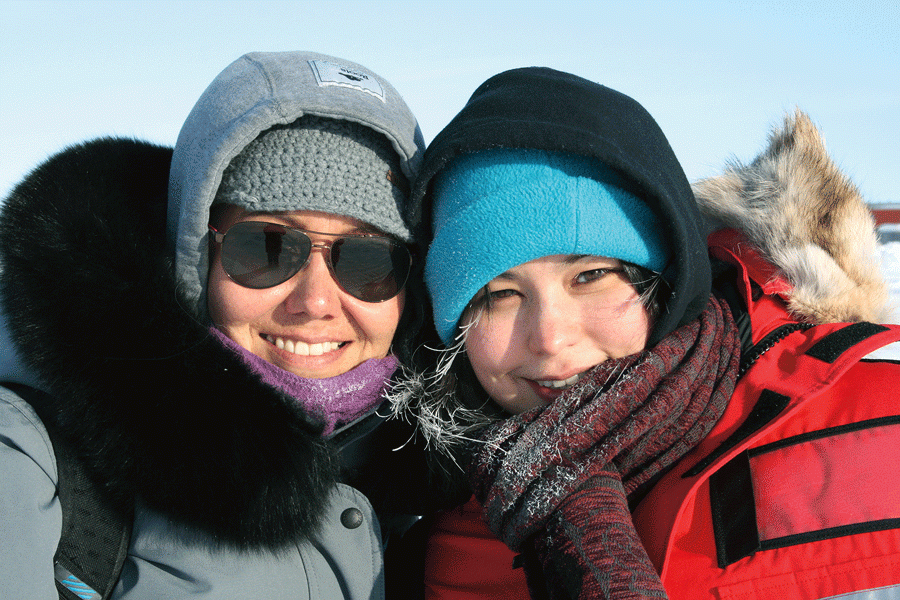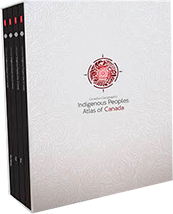Family Structures
Inuit methods of raising children differ considerably from those in Southern Canada. To the outside observer, Inuit children enjoy a substantial amount of freedom, as indicated by the fact that when not in school, children stay up much later than southern children, are often fed when they are hungry and not according to a set meal schedule, and are disciplined in a different manner by their parents. To the uninformed observer, Inuit parents may appear indifferent or overly lax with their children, though this misconception is largely due to cultural differences.
Naming Customs
Inuit believe that when a child is born, the “soul” or spirit of a recently deceased relative or community member is taken on by the newborn. The newborn is then named after this person. This “soul” manifests in the child in a variety of ways, including certain physical characteristics, skills or personality traits. Since the child is, in a sense, part of the person whom they were named after, the child is deserving of the same respect and treatment their namesake received while alive. It would be considered inappropriate, under these circumstances, to tell a child what to do, as this would be the equivalent of ordering an Elder or another adult about, in violation of important social values in Inuit culture.
These beliefs regarding children have resulted in Inuit parents allowing their children a much greater degree of freedom than most non-Inuit would be comfortable with. As long as they do not harm themselves or other people, or damage important items such as food or hunting equipment, there are few limits placed on the activities of children. This should not be interpreted as the parents being overly permissive, because the practice includes certain limitations as well. For example, a child may receive affectionate cuddling or choice bits of food when he requests it. However, a child who is pouting or throwing a tantrum may be ignored, and to do otherwise would be considered intrusive and could possibly slow the development of the child’s ability to reason.
To the outside observer, Inuit children enjoy a substantial amount of freedom.

This does not mean Inuit children are not disciplined. Young children will be restrained if they persist in a potentially dangerous activity. Subtle verbal cues by older members of the family indicate to children when their behaviour is inappropriate. Teasing is used as an effective means of drawing attention to a child’s poor behaviour. Older children are rarely physically disciplined, but when this does occur it is, as in many cultures, more often an expression of the parent’s frustration or anger than a real effort to change the child’s behaviour. A more effective means of guiding an older child is to talk to another person about the child’s behaviour within hearing distance rather than to have a direct confrontation.
Birth of a Child
Traditionally, the mother was often assisted in giving birth by an older woman experienced in childbirth. This older woman might also look for clues that would indicate the future and character of the child. After the baby was born, the child assumed its place on the family sleeping platform next to the mother. From the day of birth, the baby was in almost constant contact with the mother, either in the pouch beneath the hood of her amauti (a special parka with a large hood, used to carry the baby on the mother’s back) or nestled in the front of the amauti for feeding. The baby would spend much of its early life tucked into the amauti and remain the favourite of the family. Older girls often assumed some of the duties associated with raising young children.
Breastfeeding
A child would traditionally be weaned when the mother became pregnant with her next child. This was three years on average, but it was not uncommon to have children as old as five years still being suckled if there were no younger siblings to displace them. Weaning was a difficult time for children, as it heralded an end to the period when they were the centre of the family’s attention.
Once weaned, the child was gradually encouraged to develop more adult behaviours such as self-control, patience, generosity and consideration for others. Instruction in these behaviours was carefully directed towards younger children. Children were expected to become more helpful around the home and to begin learning skills that would help them later in life. In general, girls were introduced to these responsibilities earlier than boys and were expected to begin to assume responsibilities towards their younger siblings as early as four years of age. Children were also taught to show respect to Elders by being sensitive to their needs and listening to their advice. As the children matured, they were allowed to either accept or reject the advice of older people without fear of criticism.

Adoption
The bonds between children and adults are Fluid in Inuit society in comparison with those in the larger Canadian society. Children are commonly seen darting around visiting various households, staying for quick visits and then dashing off to visit another home. Any adult can exercise authority in terms of discipline, instruction and disapproval for inappropriate behaviour, though the responsibility for children generally rests with the immediate family.
This fluidity of bonds between adults and children extends into adoption practices. A child who loses his parents carries no stigma in Inuit society. Orphans are readily accepted into another household, usually that of a close relative. If a couple are unable to have children themselves, they could ask another couple who have had several children to adopt their next child. If this avenue proves fruitless, they could ask more distant relatives or friends. Once adopted into the new family, children know who their biological parents are, but their primary loyalty is to the adoptive parents. The biological mother often retains a very special relationship with the child and plays an active role in the child’s life.


Order now
from Amazon.ca or Chapters.Indigo.ca or contact your favourite bookseller or educational wholesaler




